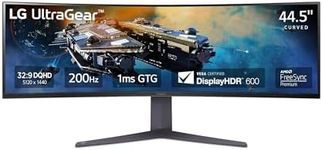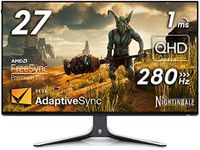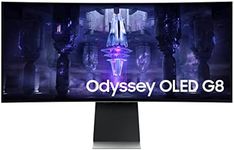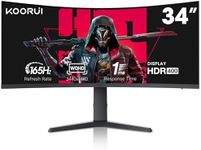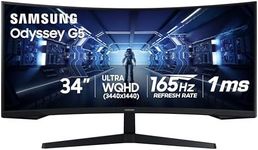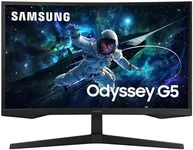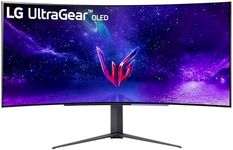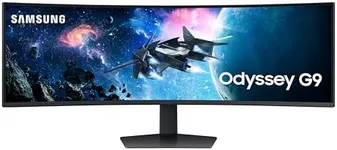Buying Guide for the Best Curved Gaming Monitors
Choosing a curved gaming monitor can really enhance your gaming experience by making visuals more immersive and comfortable for your eyes. The curve of the screen helps draw you into the action, especially if you play a lot of fast-paced or visually rich games. When picking the right curved gaming monitor, it's important to understand the key specifications that affect how the monitor will look and feel during use. By learning what each spec means and how it relates to your gaming habits, you can make a choice that fits your needs and preferences.Screen SizeScreen size refers to the diagonal measurement of the monitor, usually in inches. This is important because a larger screen can make games feel more immersive, but it also takes up more space on your desk. Smaller screens (around 24-27 inches) are easier to fit in tight spaces and are great for competitive gaming where you want to see everything at once. Medium screens (27-32 inches) offer a balance between immersion and practicality, while larger screens (32 inches and above) are best for deep immersion, especially in single-player or cinematic games. Think about your desk space and how close you sit to the monitor when choosing the right size for you.
Curvature (Curve Radius)Curvature is measured in 'R' (radius), such as 1800R or 1000R, and it tells you how pronounced the curve is. A lower number means a more noticeable curve. For example, 1000R is a deeper curve than 1800R. A stronger curve can make you feel more surrounded by the game, which is great for immersion, but it might feel odd for tasks like reading or editing documents. If you mostly play immersive games and sit close to your monitor, a deeper curve (like 1000R) might be best. If you want a more subtle effect or use your monitor for work too, a gentler curve (like 1800R or 1500R) is a good choice.
Refresh RateRefresh rate is how many times per second the monitor updates the image, measured in Hertz (Hz). Higher refresh rates make motion look smoother, which is especially important in fast-paced games. Standard monitors are 60Hz, but gaming monitors often offer 120Hz, 144Hz, 165Hz, or even higher. For casual gaming, 60-75Hz is fine, but for competitive or action-heavy games, 120Hz or more is recommended. Choose a refresh rate that matches the types of games you play and the power of your gaming computer.
ResolutionResolution is the number of pixels on the screen, such as Full HD (1920x1080), Quad HD (2560x1440), or 4K (3840x2160). Higher resolution means sharper images and more detail, but it also requires a more powerful computer to run games smoothly. Full HD is good for smaller screens and less demanding games, Quad HD is a sweet spot for most gamers, and 4K is best for large screens and those who want the sharpest visuals. Pick a resolution that matches your screen size and your computer's capabilities.
Panel TypePanel type affects color quality, viewing angles, and response time. The main types are VA, IPS, and TN. VA panels have good contrast and deep blacks, making them great for dark games and movies. IPS panels offer better color accuracy and wider viewing angles, which is good for vibrant games and creative work. TN panels have the fastest response times but usually lower color quality. If you want rich colors and good viewing angles, go for IPS. If you play a lot of dark games or watch movies, VA is a solid choice. For fast-paced competitive gaming, TN might be best, but most modern monitors use IPS or VA for a better balance.
Response TimeResponse time is how quickly a pixel can change from one color to another, measured in milliseconds (ms). Lower response times mean less motion blur and ghosting, which is important for fast-moving games. Typical values are 1ms to 5ms. For most gamers, anything 5ms or lower is fine, but if you play a lot of shooters or racing games, look for 1ms to 2ms for the best experience.
ConnectivityConnectivity refers to the types and number of ports the monitor has, such as HDMI, DisplayPort, and USB. This is important to make sure your monitor can connect to your computer, console, or other devices. Most gaming monitors have at least one HDMI and one DisplayPort. If you plan to connect multiple devices or want to use features like USB hubs or audio out, check the available ports. Choose a monitor with the right connections for your setup.
